Roadside Fuels Reduction for Neighborhood Safety
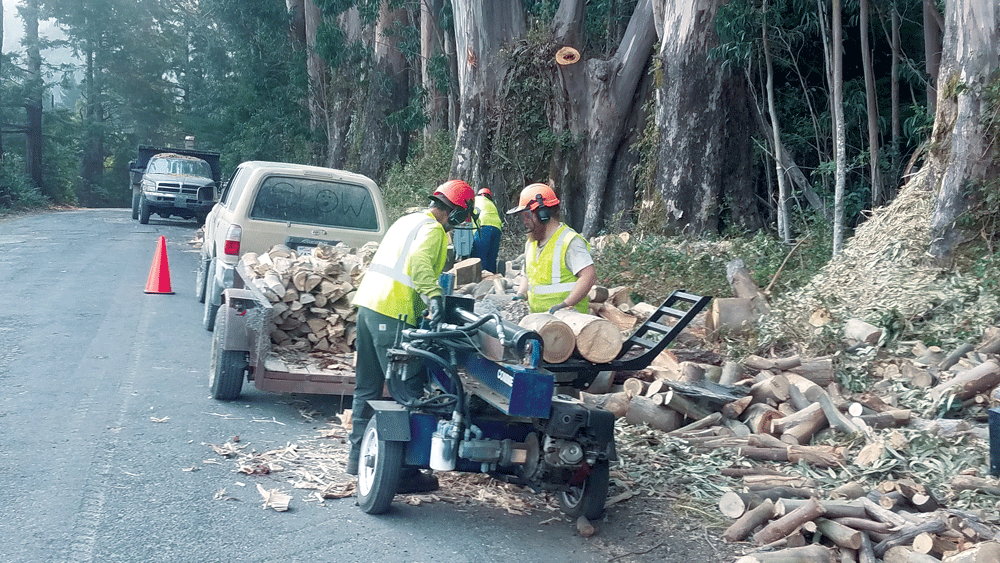
By Ali Freedlund, Mattole Restoration Council
Picture this: A lovely country lane where multiple residents rumble from their driveways en route to the post office or store. On their way they pass a wall of thick, impenetrable brush and a hillside dense with fuels, until they carefully cross a narrow, one-lane bridge. They just catch their breath when they enter a long line of particularly frightening roadside fuels known as “The Eucalyptus Forest” (to be said in a loud wavering voice). This forest not only edges the road but sends long-reaching branches over the road and sometimes over PG&E lines on the other side. Now, imagine having the additional knowledge that Eucalyptus branches often drop from the air randomly. What a fright, right? Well, that is how residents expressed themselves at meetings of the Lower Mattole Fire Safe Council (LMFSC), several times.
Treating “The Eucalyptus Forest” (that loud voice again) and the other roadside edges described became a high priority not only among locals but with the Humboldt County Fire Safe Council (HCFSC). This route is the only ingress and egress for many in the neighborhood. Thus, the Mattole Restoration Council (MRC) contracted with HCFSC to reduce fuels along this County road segment. Funding for this project was provided by the California Department of Forestry and Fire Protection, as part of the California Climate Investments Program.
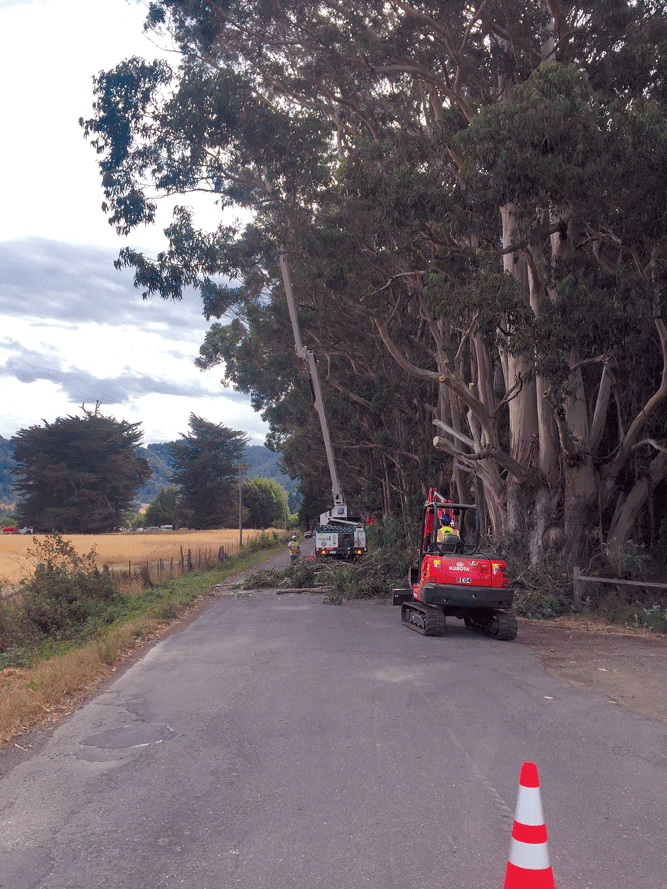
But this funding source was not going to deal with those hazardous branches. So, MRC applied to Pacific Gas and Electric Company’s (PG&E) Vegetation Management Program specifically to contract with a company to bring a bucket truck and extend the capabilities of our ground crew. We were awarded funding and the project began, first with Family Tree Resource, Inc., and their bucket truck crew. As a flagger supervisor on the job, I was thrilled to see so many branches lowered safely to the ground. And the best part was that MRC’s Fuels and Fire crew were able not only to chip a lot of the material, but to make firewood to give away to our elders.
To fill in the backstory, the Mattole Restoration Council has collaborated with the Lower Mattole Fire Safe Council (LMFSC) since its formation in 2002 on ensuring our community’s fire preparedness through planning and projects that reduce the impacts from wildfire. LMFSC is roughly composed of two communities: Honeydew and Petrolia, with their surrounding areas. Meetings include community members, volunteer fire fighters, CalFire, and representatives of our Neighborhood Emergency Service Teams. Until this year, LMFSC has regularly held two meetings a year to discuss current and future projects. Because of the restrictions from COVID-19, our regular June meeting was postponed, but fuels-reduction projects went ahead as they are considered essential.
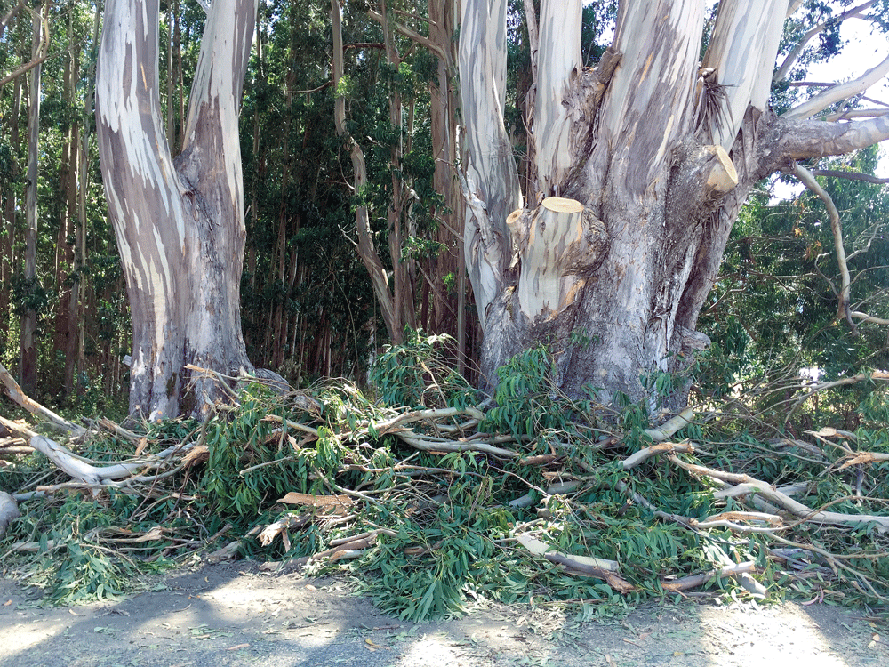
After the bucket truck work, the MRC Fuels and Fire crew set about cleaning up the piles of material that had been pushed to the edge of the road. It was hectic. Fortunately, the crew had help from a volunteer neighbor-with-an-excavator to separate the larger material from the smaller stuff that needed to be prepped for chipping. After the chipping was done, firewood was made and delivered to 22 households. Then the second part of the project with County funding was implemented: remove fuels for an additional 30 feet into the forest (landowner specification) with sawyers, have swampers bring branch material to the roadside for chipping, chip the stuff, deliver dumploads of chips to residents who want it, bring logs down for firewood, rake and wrap up. Lastly, the road segment on the other side of the bridge (that dense wall of brush) was treated. Because of the need to stop and start work due to smoky conditions from distant wildfires and/or Red-Flag Warning days, the entire project took two months.
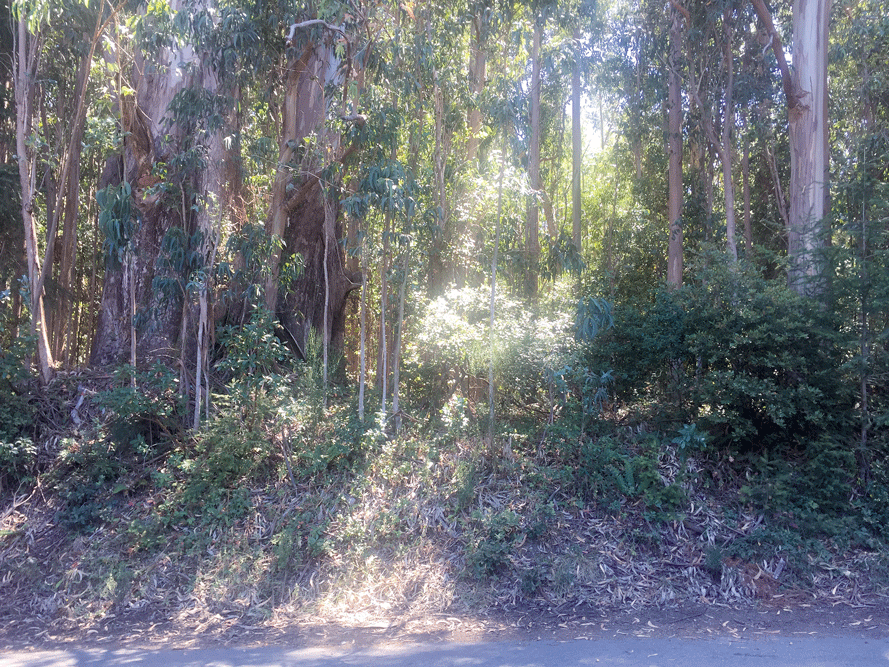
Suffice to say, this roadside fuels-treatment project is atypical for Humboldt County. It is believed that “The Eucalyptus Forest” (loud voice again) was planted late in the 19th century and the smaller ingrowth was regularly used as a firewood source for decades. I even heard it was a public park at one time. But all that changed with the changing of ownerships. Until about 30 years ago, “The Eucalyptus Forest” was thinned of fuels more regularly. Therefore, many of the fuels removed on this project were very small ‘pinner’ trees that had packed into any available space. They will grow back, as Eucalyptus is wont to do, but for now, residents in the neighborhood can feel safer traveling the road, whether to go to the General Store or to evacuate in an emergency.
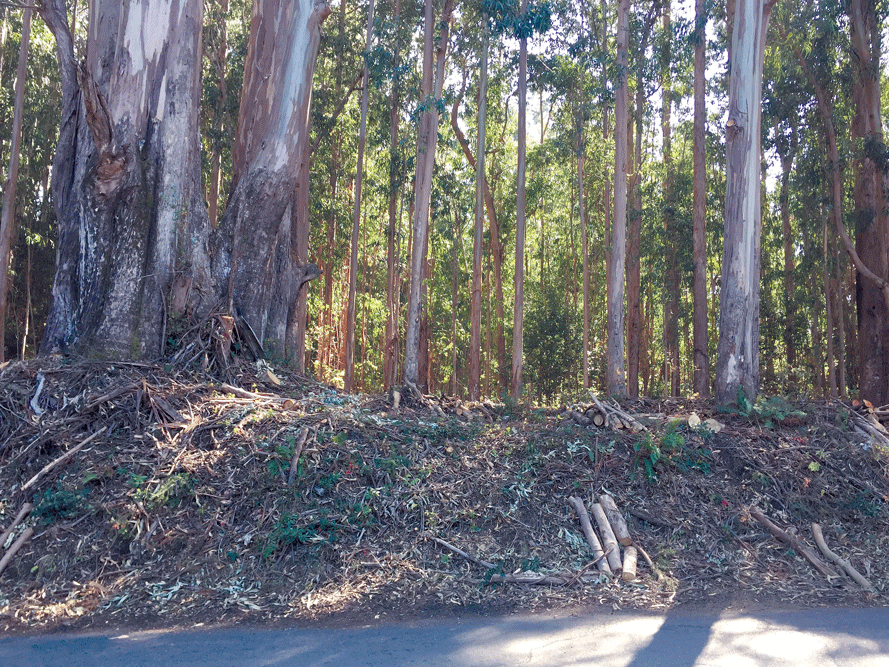
This article highlights just one of the Eucalyptus areas treated along County roads in Petrolia this year. Two other segments were treated with the bucket truck, and one was not. Petrolia also lays claim to the largest Blue Gum Eucalyptus tree in the country just off the road on the way to Petrolia from Ferndale at the roadside cemetery. Native to Australia, Eucalyptus trees are beautiful as singular specimens but they invade quickly, are hard to get rid of, are dangerous when limbs fall, and are a HUGE fire hazard. But they do make good firewood.
For more information:
www.mattole.org
